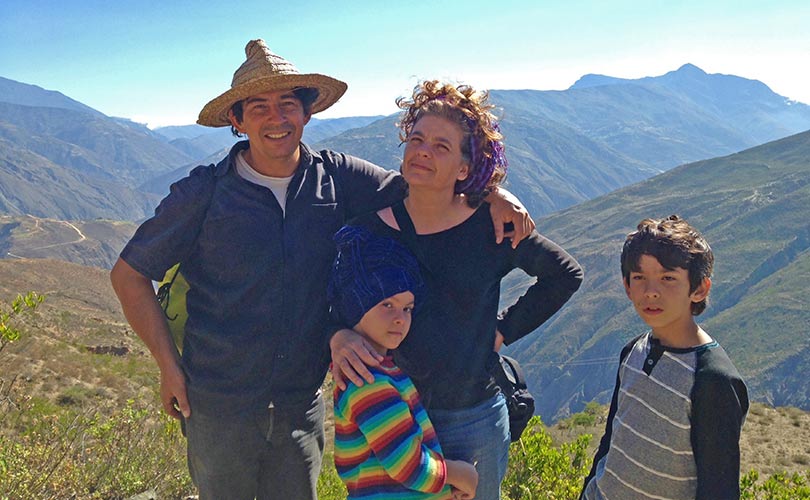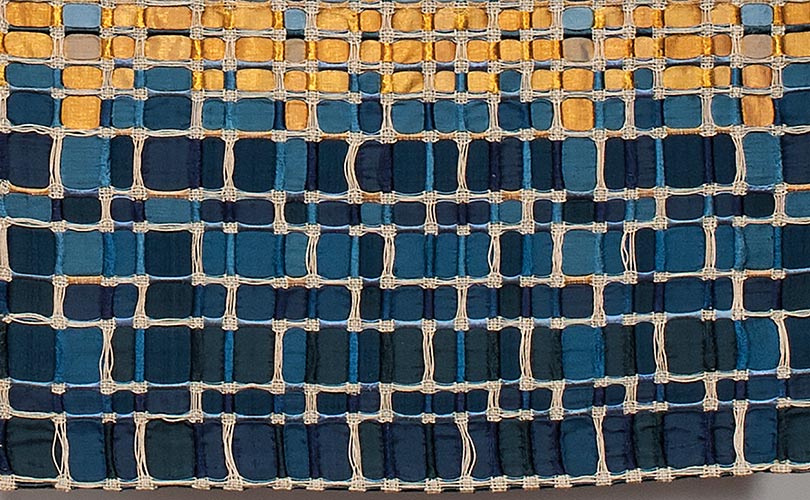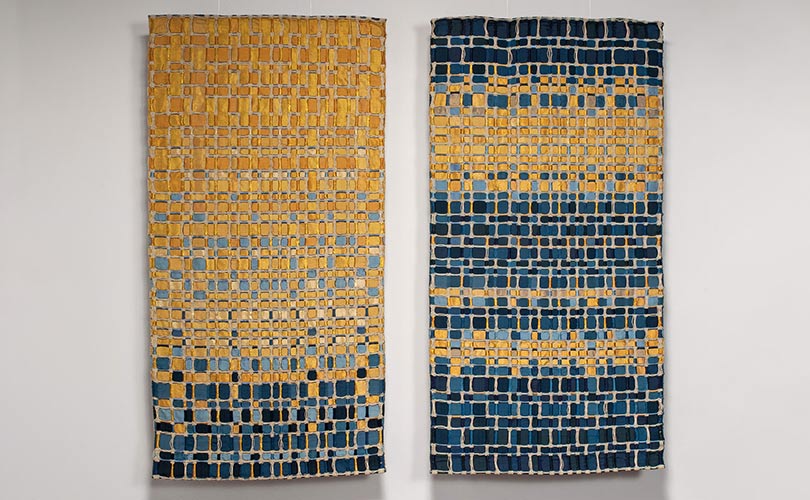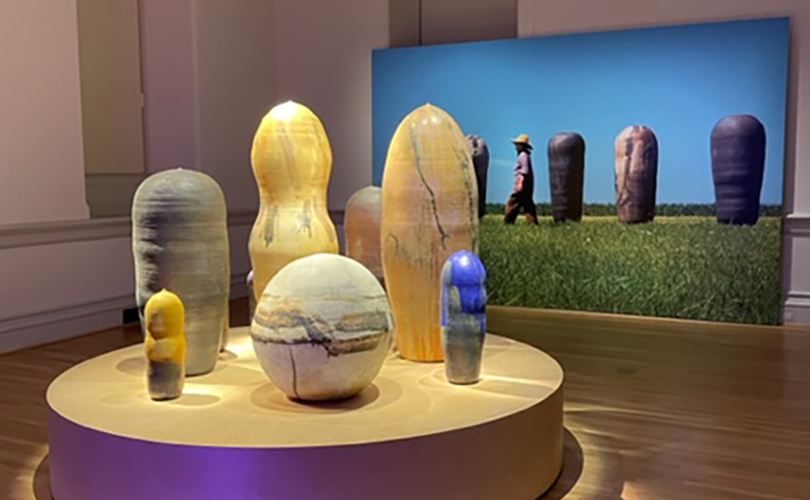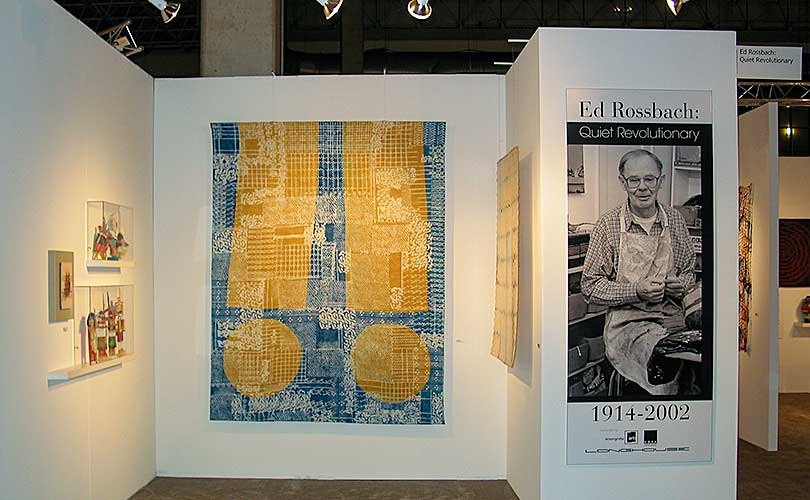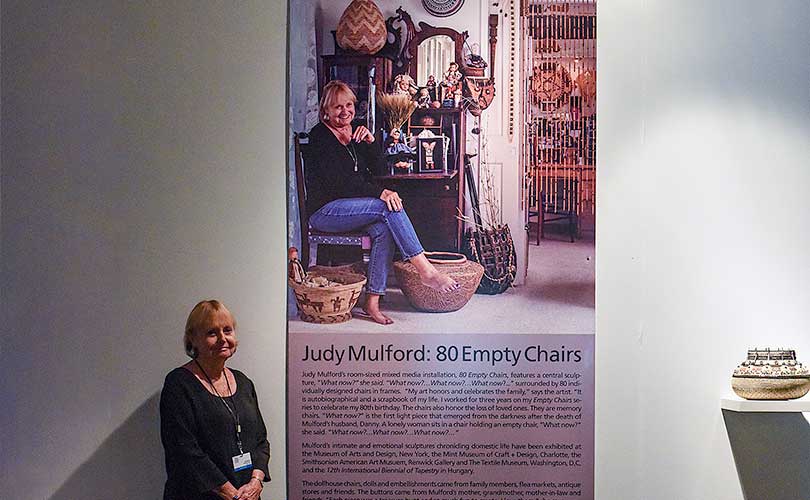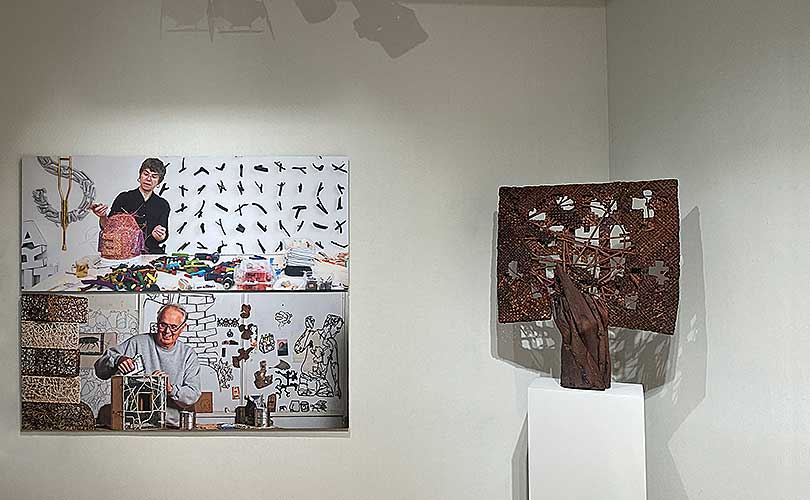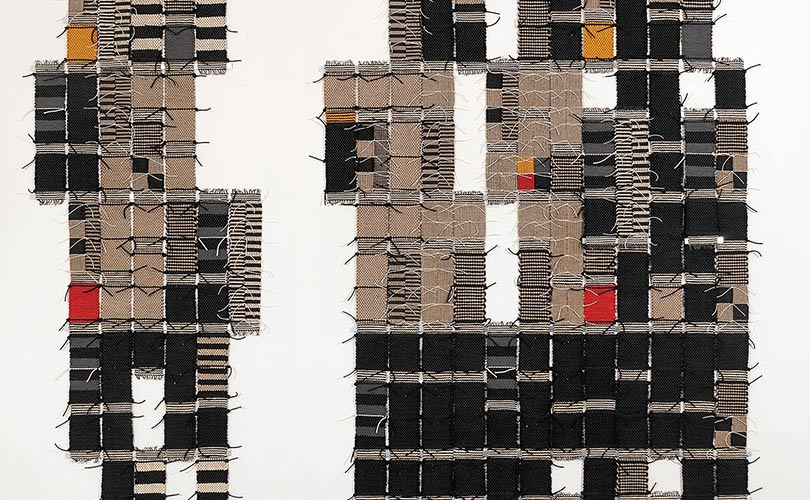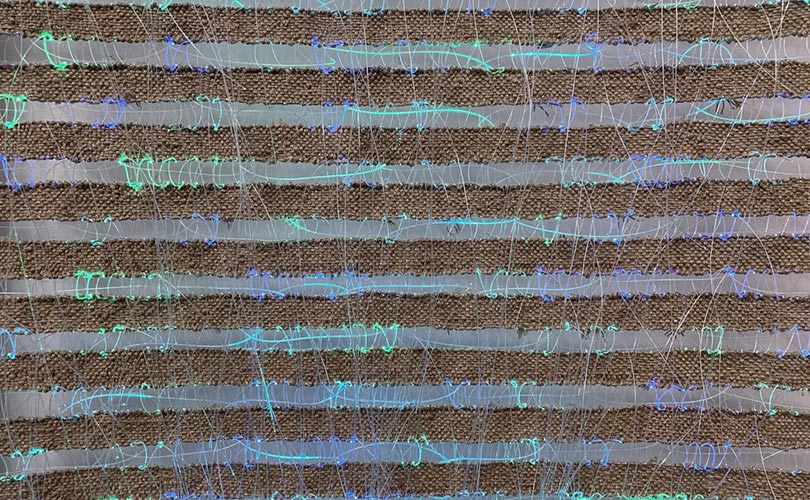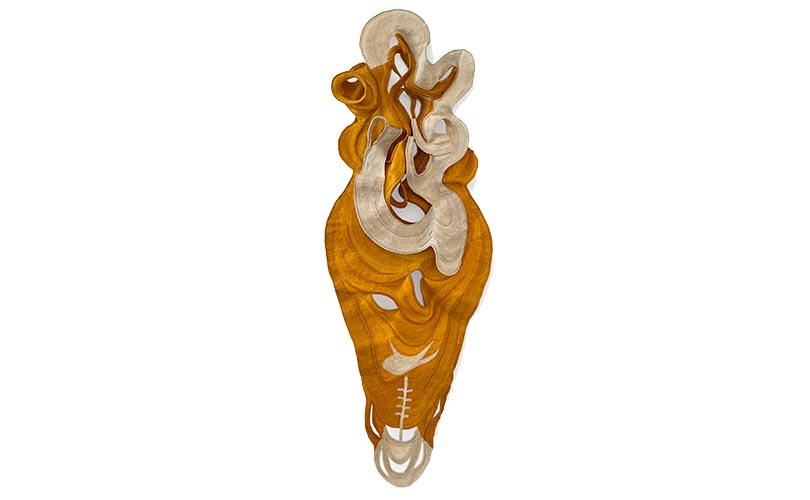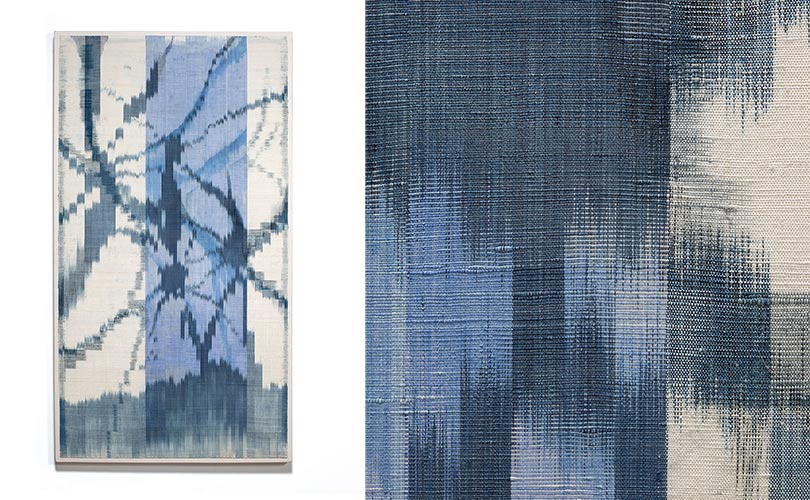Welcome to our June Art Assembled blog, where we are thrilled to highlight the incredible art featured in our New This Week series. As the summer season kicks off, we are excited to showcase the works of Anne Wilson, Ed Rossbach, Adela Akers, and Katherine Westphal – four visionary artists who have left an indelible mark on the world of contemporary art.
Throughout the month of June, we have been captivated by the diverse and thought-provoking creations of these artists. From Wilson’s boundary-pushing fiber art to Rossbach’s innovative weaving techniques and unconventional materials, each artwork invites us to explore new dimensions of artistic expression.
Join us as we delve into the artistic journeys of these remarkable individuals, uncovering the inspirations, techniques, and stories behind their extraordinary works!
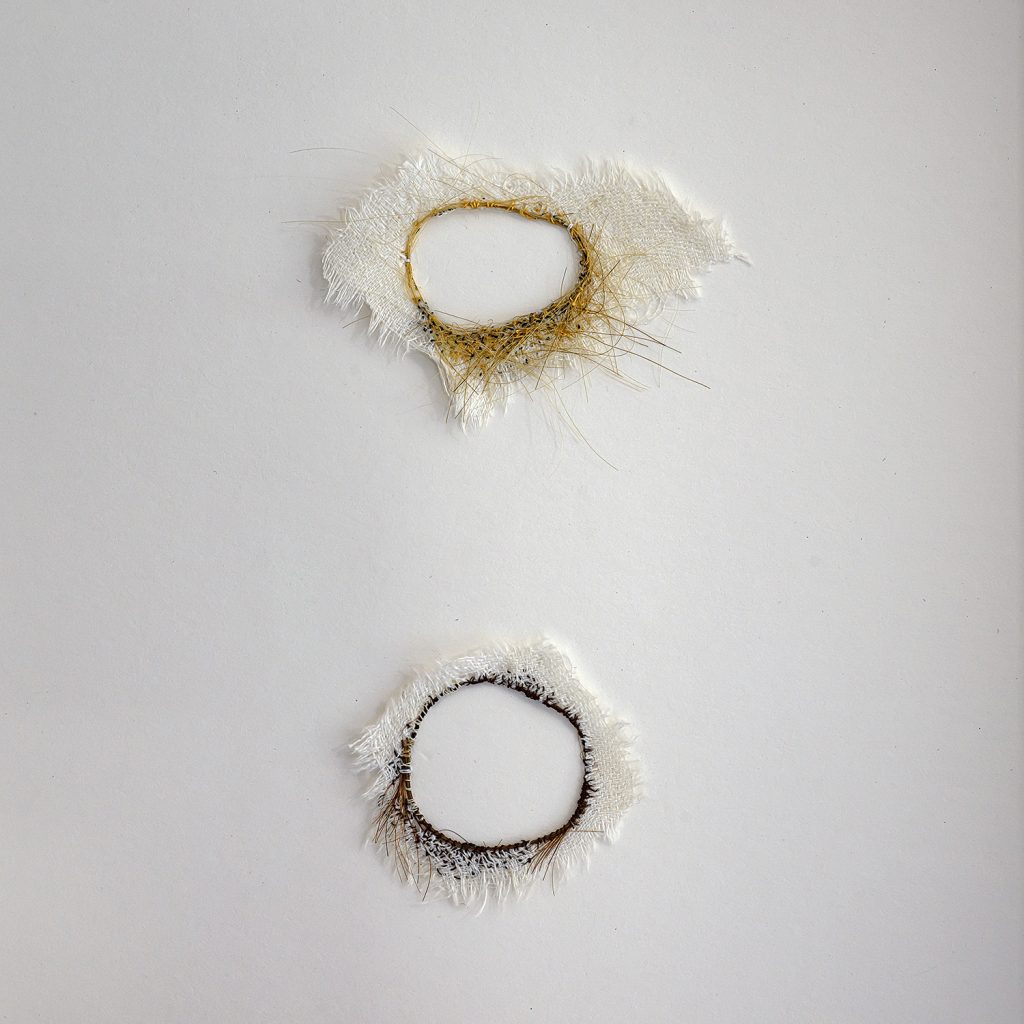
At the beginning of this month, we turned our spotlight to the extraordinary talent of Anne Wilson, a Chicago-based visual artist whose groundbreaking work pushes the boundaries of fiber art. Wilson’s artistic journey is a testament to her relentless pursuit of innovation and her ability to extend traditional processes into new media.
With her diverse range of mediums including sculpture, drawings, photography, performance, and stop-motion animations, Wilson seamlessly weaves together table linens, bed sheets, human hair, lace, glass, thread, and wire to create mesmerizing and thought-provoking compositions. Her art reflects a deep exploration of materiality, weaving together threads of emotion, history, and culture.
We think it’s safe to say that her meticulous craftsmanship and attention to detail are evident in every piece she creates. Through her art, Wilson explores themes of identity, memory, and the complex interplay between the personal and the universal.
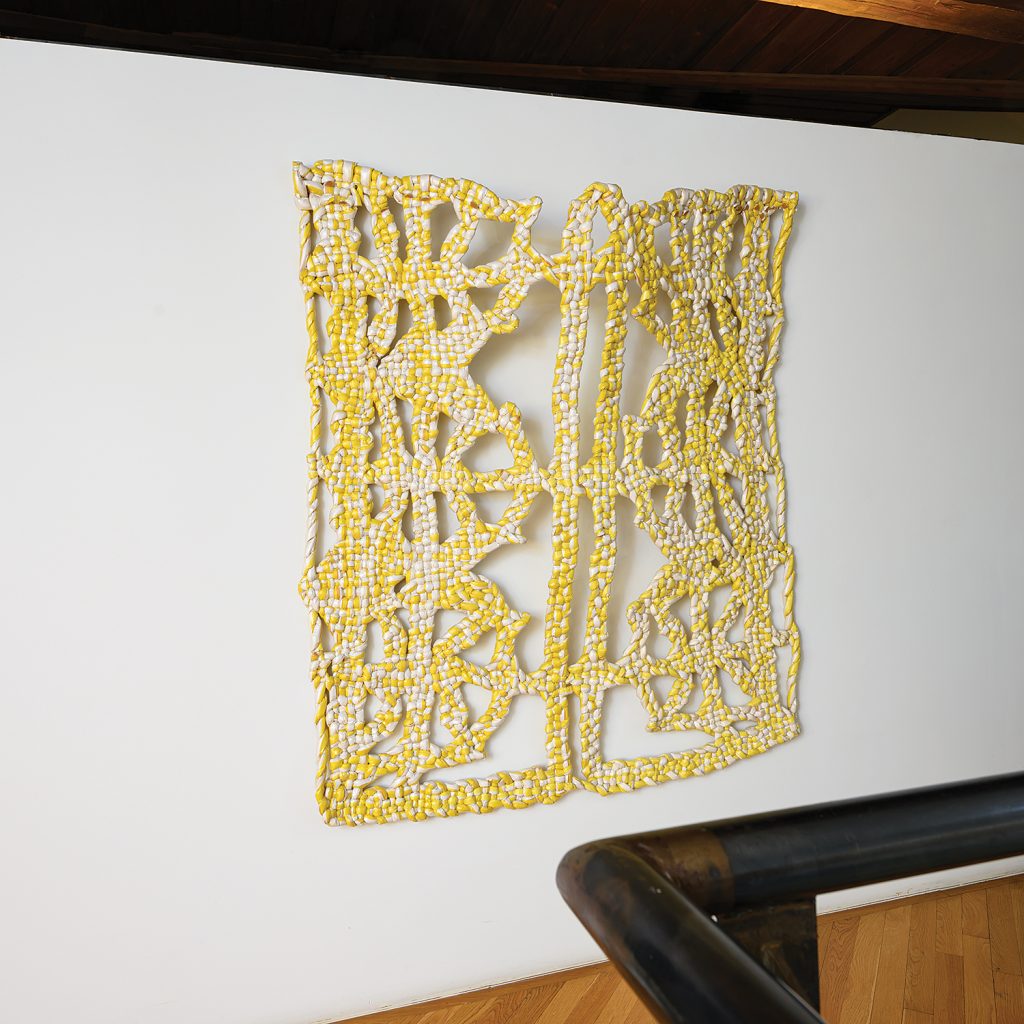
Next, we direct our attention to the remarkable artist Ed Rossbach. Rossbach was a visionary who made significant contributions to the world of fiber art. His artistic journey spanned decades, and his innovative techniques and unique approach to materials left an indelible mark on the field.
Rossbach’s exploration of weaving went beyond traditional boundaries, as he fearlessly incorporated unconventional materials such as plastics, foam rubber, and plastic tape into his works. His creations defied categorization, blurring the lines between sculpture, textiles, and mixed media. With an astute eye for detail and a penchant for experimentation, Rossbach crafted intricate and captivating pieces that challenged the notions of what fiber art could be.
Throughout his career, Rossbach’s work evolved and diversified, showcasing his mastery of various artistic mediums. From his groundbreaking dimensional weaving in the 1960s to his later explorations of cast paper techniques and mixed-media sculpture, his artistic trajectory was one of continuous growth and innovation. Through his artworks, Rossbach invites us to reimagine the possibilities of fiber as a medium and challenges us to see the world in new and exciting ways, and he will be forever cherished for it!

Later in the month, we shifted our focus to the remarkable artist Adela Akers, a Spanish-born textile and fiber artist with a rich and influential career spanning several decades. Since the 1950s, Akers has been at the forefront of the modern fiber art movement, making groundbreaking contributions to the field.
Through her innovative techniques and profound artistic expressions, Akers continues to inspire and captivate audiences with her thought-provoking creations. Her work serves as a bridge between traditional textile practices and contemporary art, pushing boundaries and expanding the possibilities of fiber as a medium. Adela Akers’ legacy as a trailblazing artist and her unwavering commitment to her craft make her an indispensable figure in the world of contemporary fiber art.
Along the way, Akers has received many prestigious awards, including grants from the National Endowment for the Arts and the Pollock-Krasner Foundation. In 2014, she was selected as an artist-in-residence at the de Young Museum in San Francisco, further solidifying her standing as an influential figure in the art community.
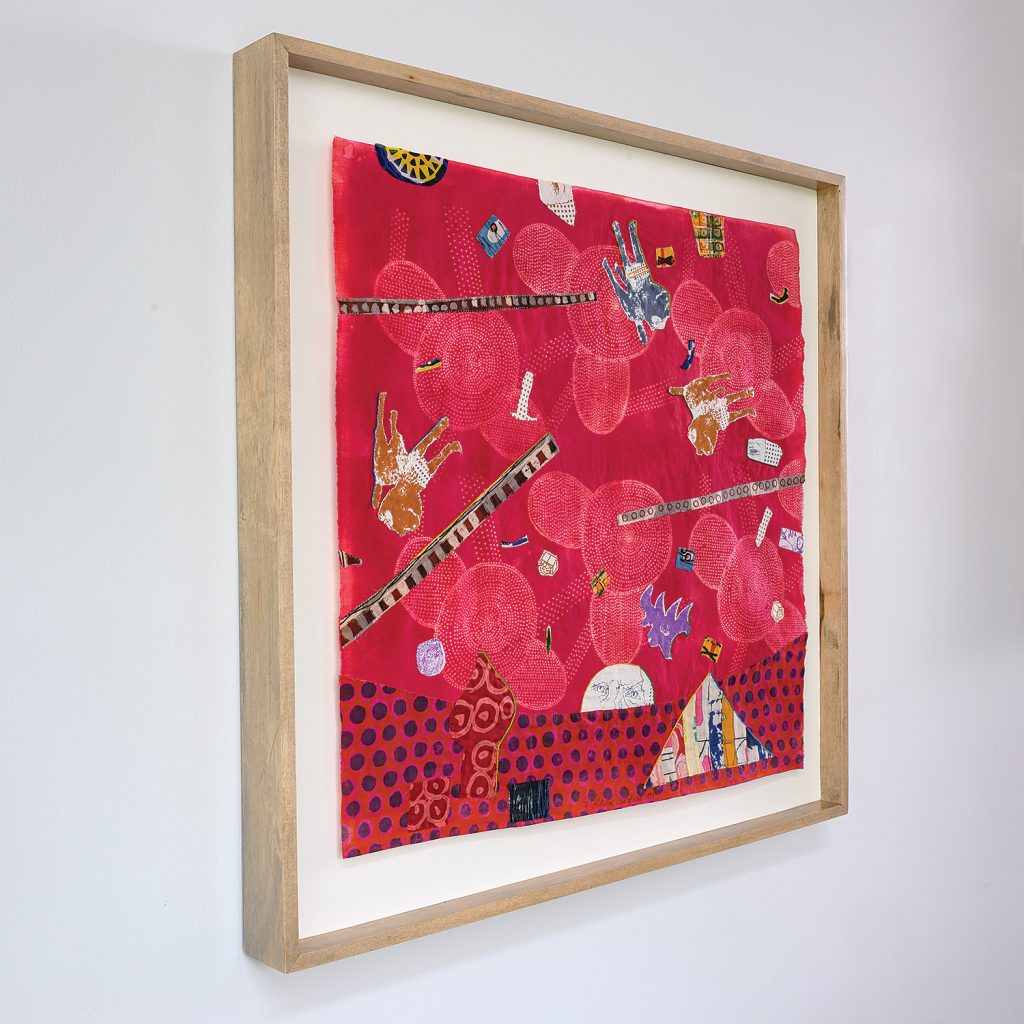
Last, but certainly not least, we immerse ourselves in the captivating world of Katherine Westphal, a visionary artist known for her innovative approach to surface, pattern, and decoration in textiles, quilts, clothing, and baskets. Westphal’s artistic journey was marked by a distinct exploration of fractured and random images, which became a signature element of her work.
Her collages were a fusion of bold imagery and vibrant colors, reflecting her background and training as a painter. With a keen eye for composition and a willingness to experiment, she allowed the textile to evolve organically, embracing a process of building up and breaking down. Guided by her intuitive and visual senses, she incorporated techniques such as cutting, sewing, embroidery, quilting, tapestry, and fringing, until she felt the message was complete.
Westphal’s artistic legacy continues to inspire and influence contemporary fiber artists, as her boundary-pushing spirit and commitment to creative exploration remain as relevant today as ever.
As we conclude our journey through the remarkable artworks of Anne Wilson, Ed Rossbach, Adela Akers, and Katherine Westphal, we are left in awe of the depth and diversity of their artistic contributions. These artists have pushed boundaries, challenged conventions, and invited us to see the world through their unique perspectives. We hope that this month’s Art Assembled blog has inspired you, sparked your curiosity, and ignited a newfound appreciation for the power of art. Join us again next month as we continue to explore the captivating world of contemporary art and introduce you to more extraordinary artists. Thank you for joining us on this artistic adventure!

